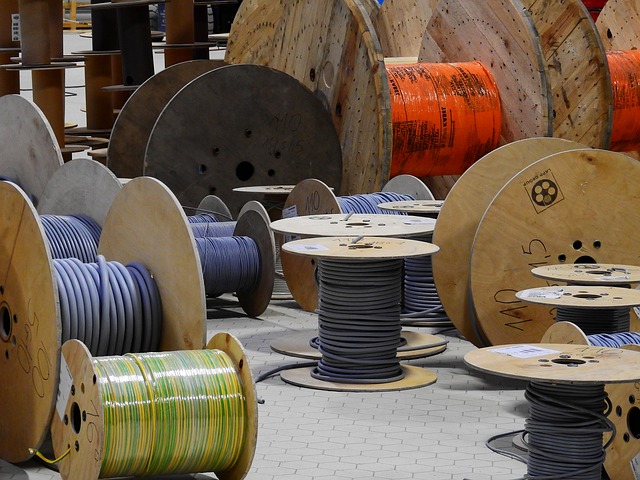Electrical wiring
[edit] Introduction
Electrical wiring is defined in the IET Wiring Regulations (BS 7671) as ‘wiring systems’, with the following definition:
| ‘An assembly made up of cable or busbars and parts, which secure, and if necessary, enclose the cable or busbars.’ |
Wiring as a term in such instances is usually taken to mean ‘cabling’ and the installation of cables within a building.
[edit] Cables and cabling
A cable, in the context of electrical installations in buildings, is an insulated conductor of electricity, usually copper or aluminium, with a protective casing which acts as an insulator. Cables are used to transmit electrical energy or data or telecommunications signals from one point to another.
The usual attributes of an electrical cable include:
- They are flexible enough to be drawn through or laid into a containment system.
- Where appropriate, they can be clipped directly or suspended from a building’s structure.
Flexible cables (often simply called flex cables), comprise finer strands of conductor material, and are used where regular movement or articulation is expected that could damage regular cables.
Cable insulation materials may comprise common plastics such as polyvinyl chloride (PVC), modified synthetic materials, or rubber. Other forms of insulation include mineral powder housed within a metallic outer casing.
The way different cables behave when subjected to fire conditions is the subject of extensive research. Toxic gas emissions, density of smoke and fire propagation speeds can vary widely with different forms of cable. This is a key consideration when selecting materials for buildings.
Since 2017, cables marketed and made available in the European Union (EU) must carry a ‘Euroclass’ classification, categorising their reaction to fire conditions.
--ECA
[edit] Related articles on Designing Buildings
- Arcing.
- Articles about electricity.
- Earthing.
- ECA articles.
- Electric.
- Electrical appliance.
- Electrical conduit.
- Electrical consumption.
- Electrical energy.
- Electrical equipment.
- Electrical installation.
- Electrical power.
- Electrical safety.
- Electrician.
- Electricity bill.
- Electrotechnical Assessment Specification guidance for installers.
- Grommet.
- IET announces release of 18th Edition Amendment 2.
- Panelboard.
- Premises wiring system.
- Ring circuit.
- Safe isolation for low voltage.
- What to know about foundation earthing.
Featured articles and news
RTPI leader to become new CIOB Chief Executive Officer
Dr Victoria Hills MRTPI, FICE to take over after Caroline Gumble’s departure.
Social and affordable housing, a long term plan for delivery
The “Delivering a Decade of Renewal for Social and Affordable Housing” strategy sets out future path.
A change to adoptive architecture
Effects of global weather warming on architectural detailing, material choice and human interaction.
The proposed publicly owned and backed subsidiary of Homes England, to facilitate new homes.
How big is the problem and what can we do to mitigate the effects?
Overheating guidance and tools for building designers
A number of cool guides to help with the heat.
The UK's Modern Industrial Strategy: A 10 year plan
Previous consultation criticism, current key elements and general support with some persisting reservations.
Building Safety Regulator reforms
New roles, new staff and a new fast track service pave the way for a single construction regulator.
Architectural Technologist CPDs and Communications
CIAT CPD… and how you can do it!
Cooling centres and cool spaces
Managing extreme heat in cities by directing the public to places for heat stress relief and water sources.
Winter gardens: A brief history and warm variations
Extending the season with glass in different forms and terms.
Restoring Great Yarmouth's Winter Gardens
Transforming one of the least sustainable constructions imaginable.
Construction Skills Mission Board launch sector drive
Newly formed government and industry collaboration set strategy for recruiting an additional 100,000 construction workers a year.
New Architects Code comes into effect in September 2025
ARB Architects Code of Conduct and Practice available with ongoing consultation regarding guidance.
Welsh Skills Body (Medr) launches ambitious plan
The new skills body brings together funding and regulation of tertiary education and research for the devolved nation.
Paul Gandy FCIOB announced as next CIOB President
Former Tilbury Douglas CEO takes helm.
UK Infrastructure: A 10 Year Strategy. In brief with reactions
With the National Infrastructure and Service Transformation Authority (NISTA).
























